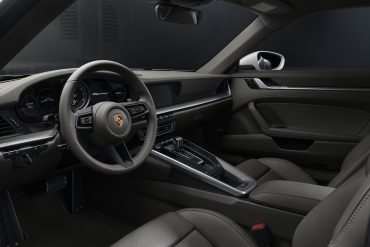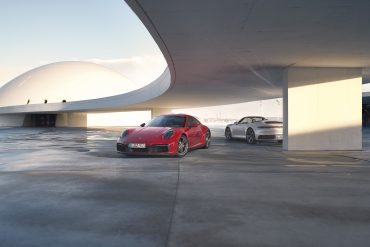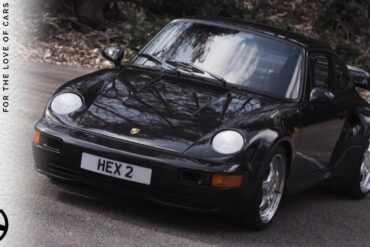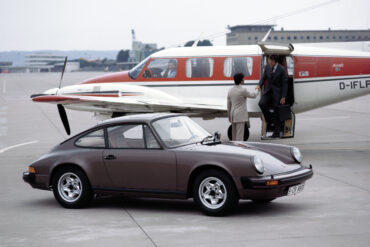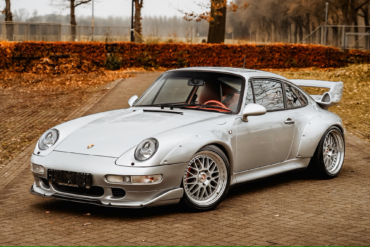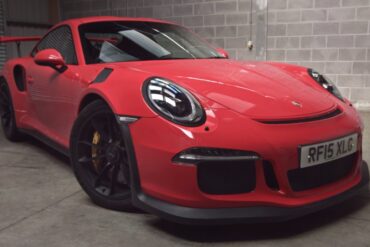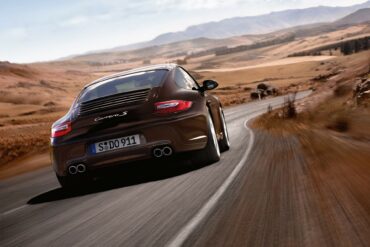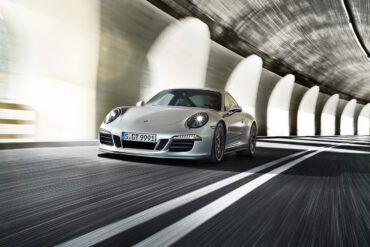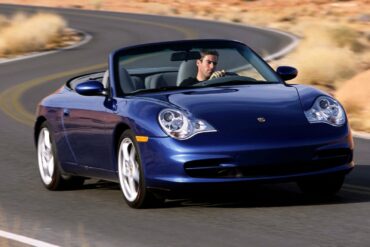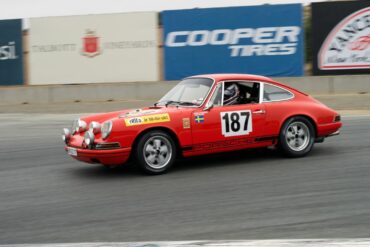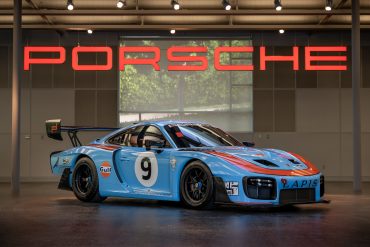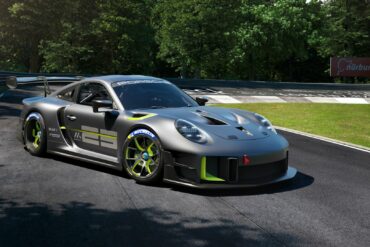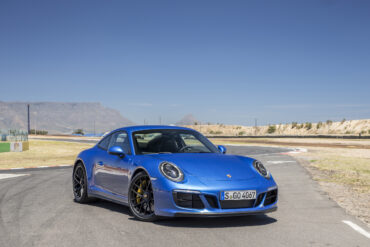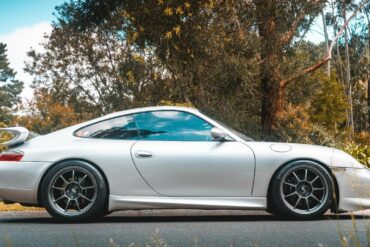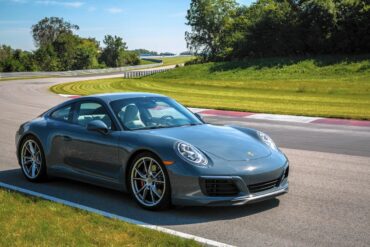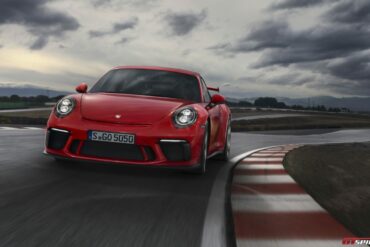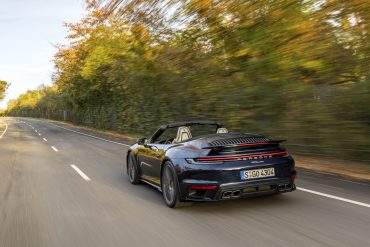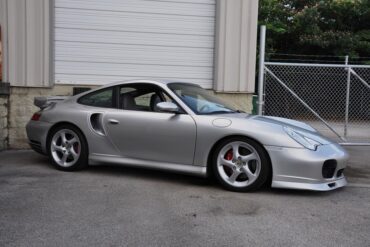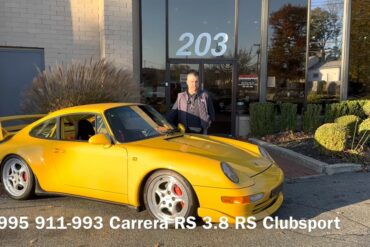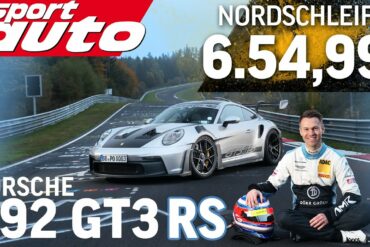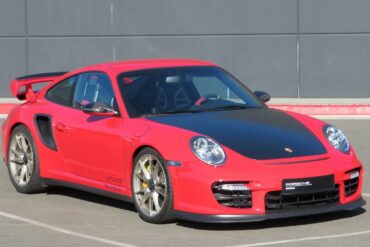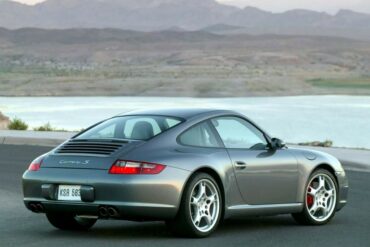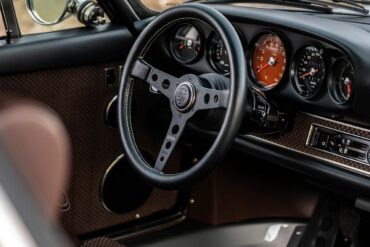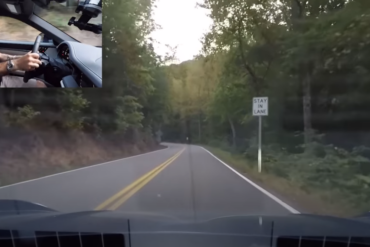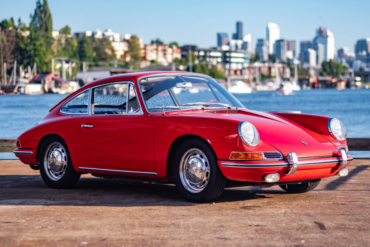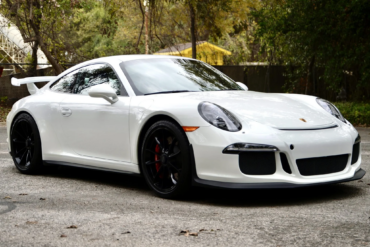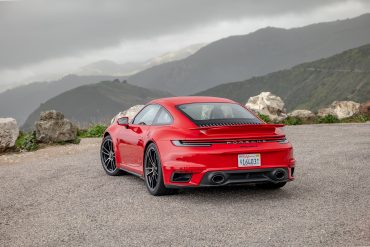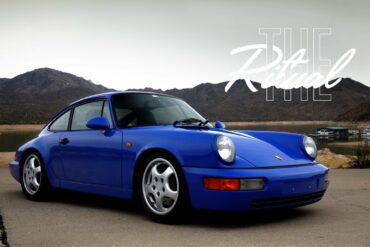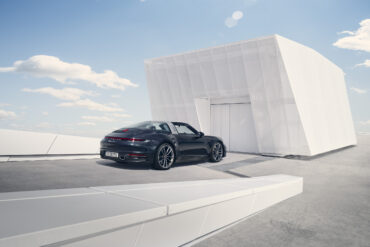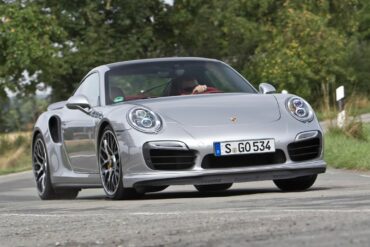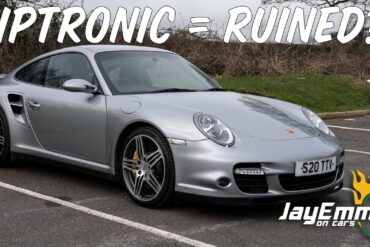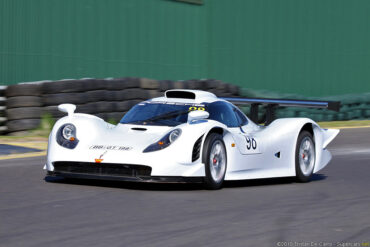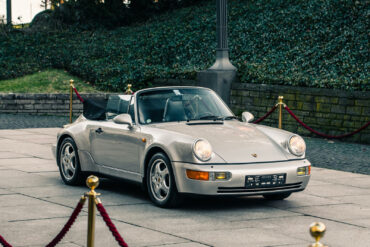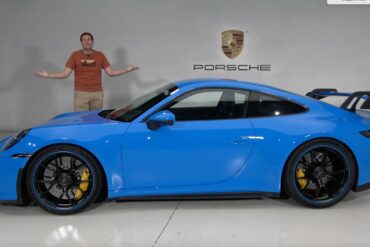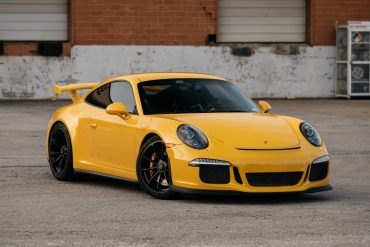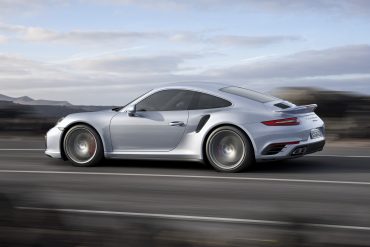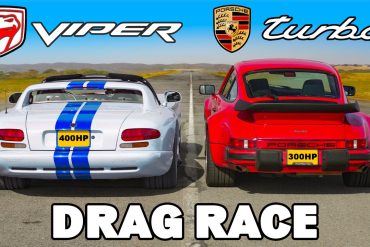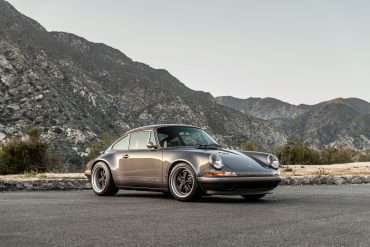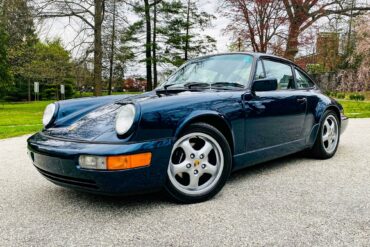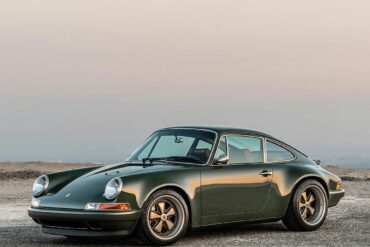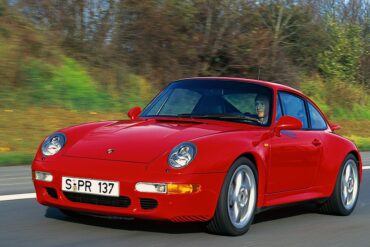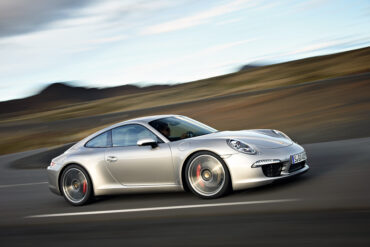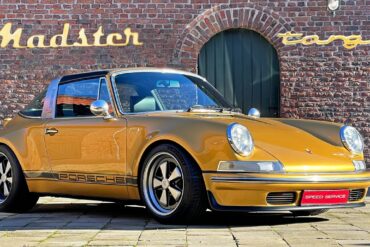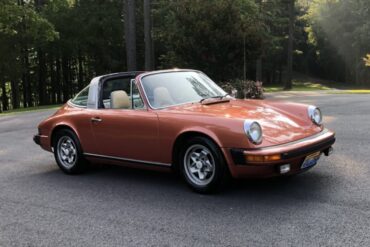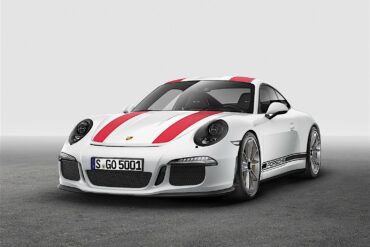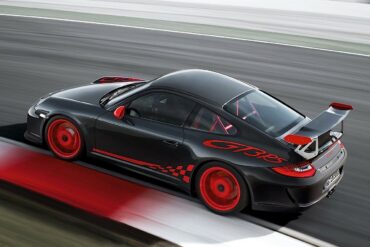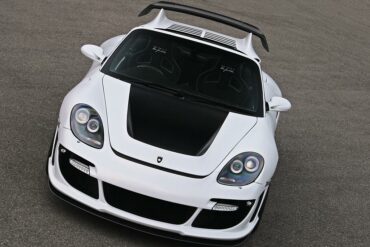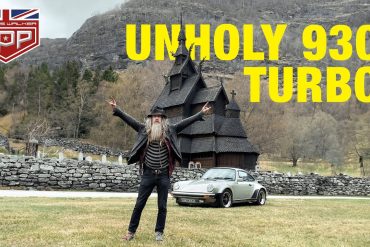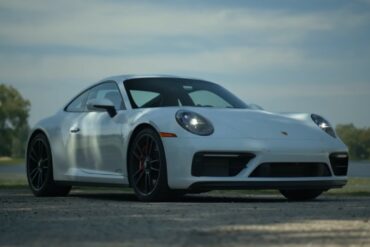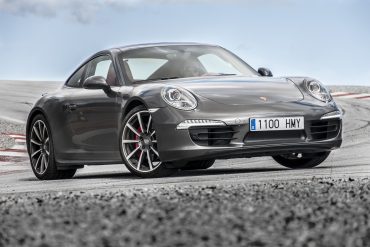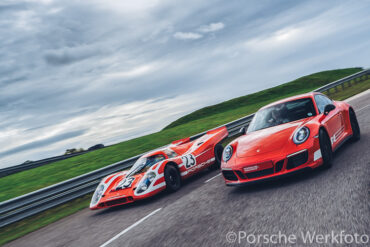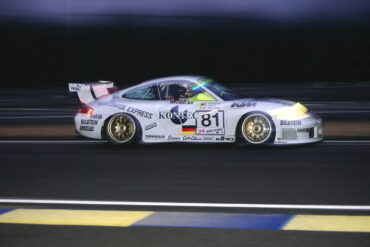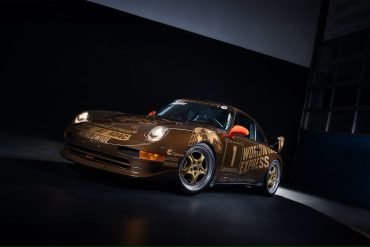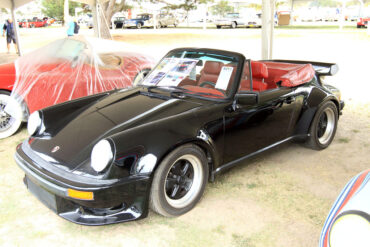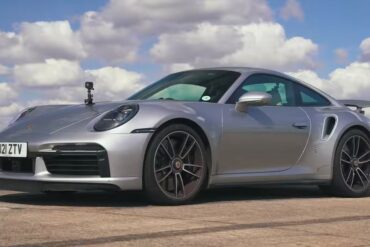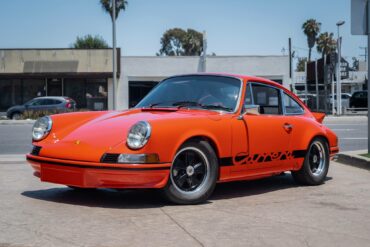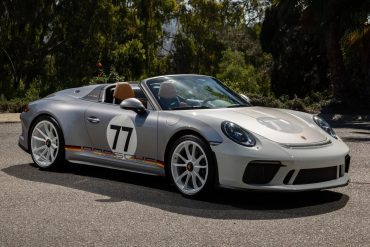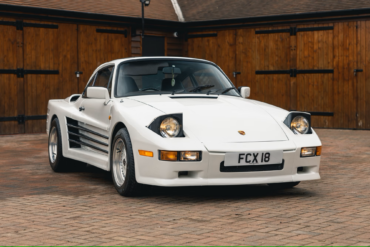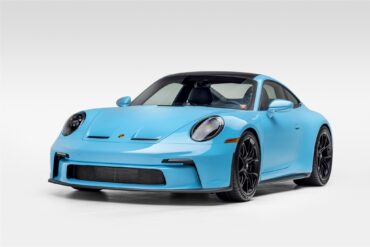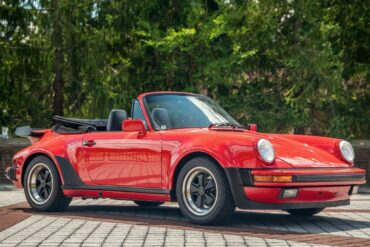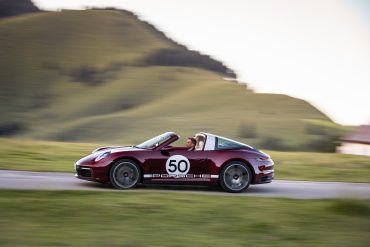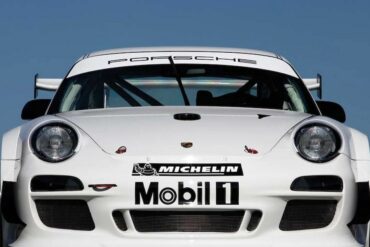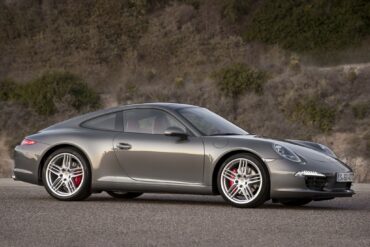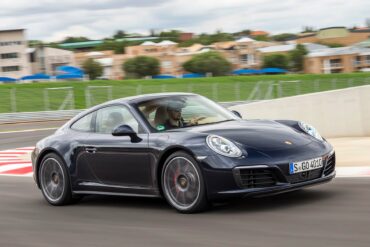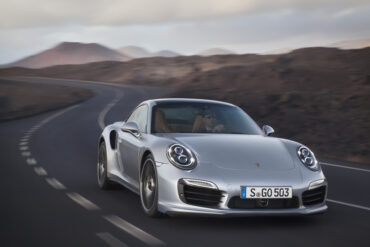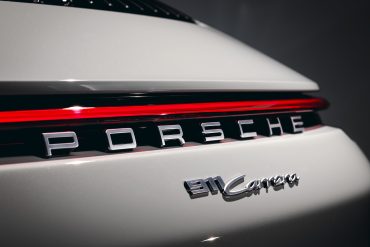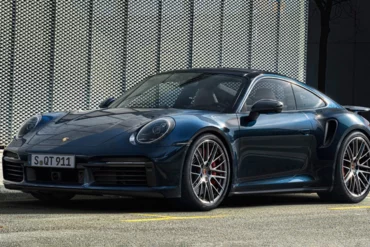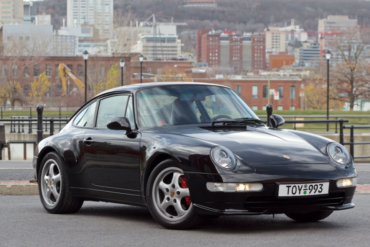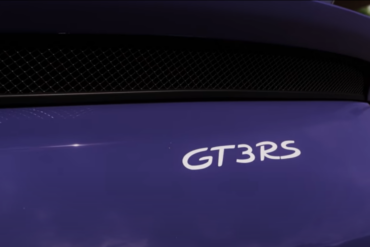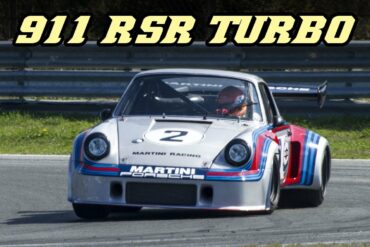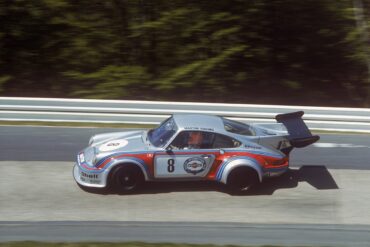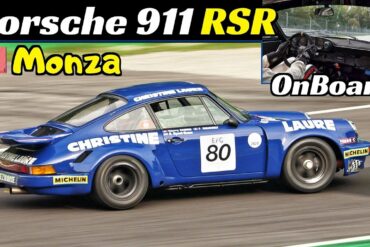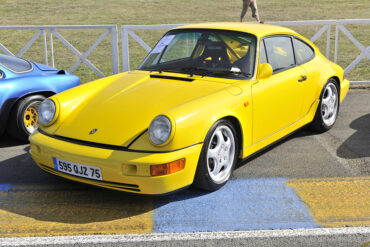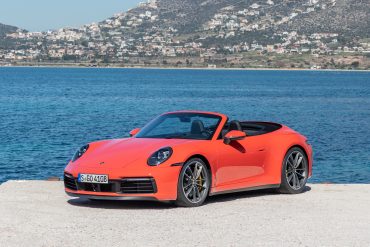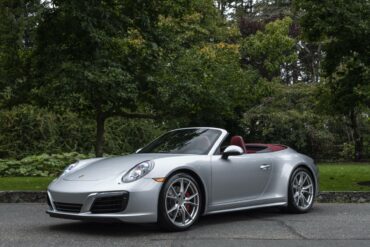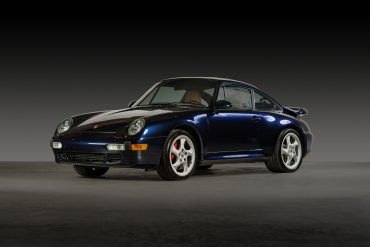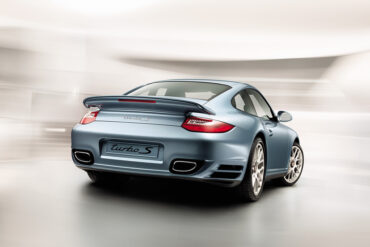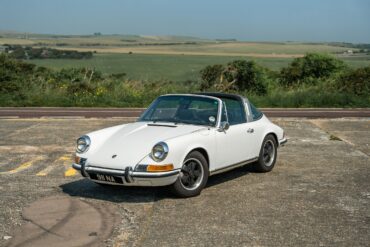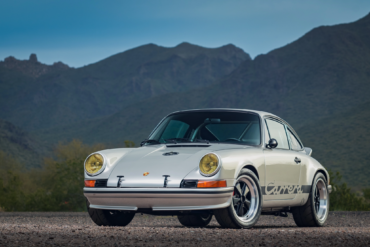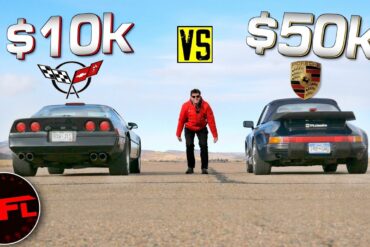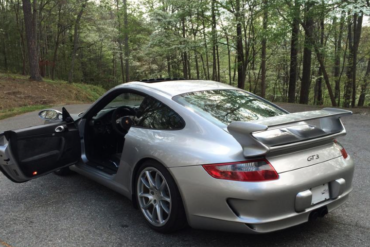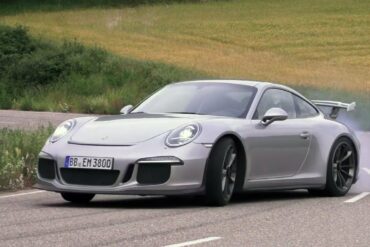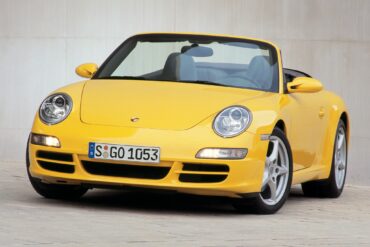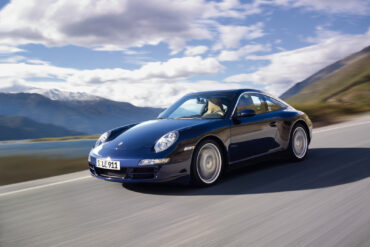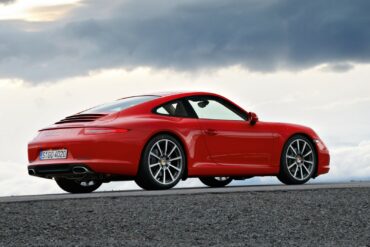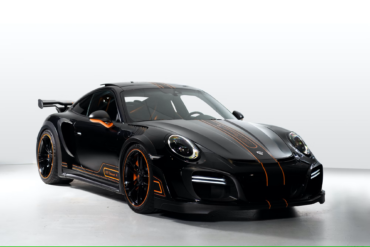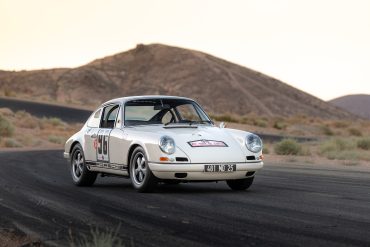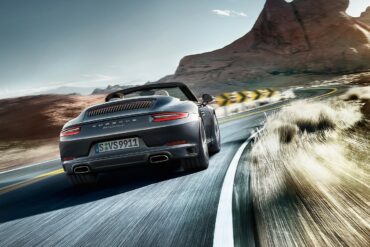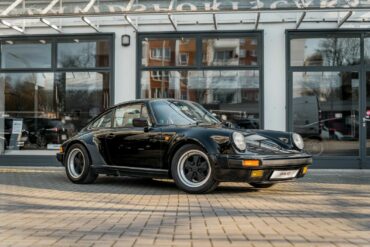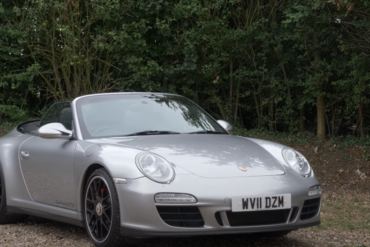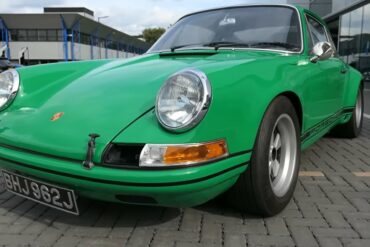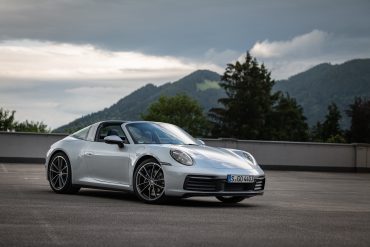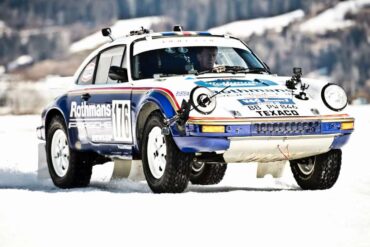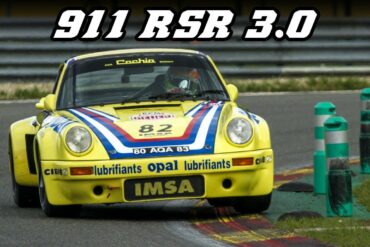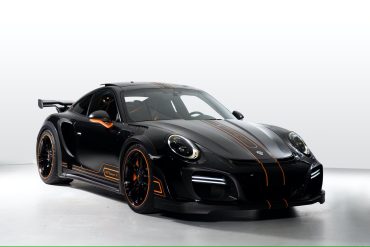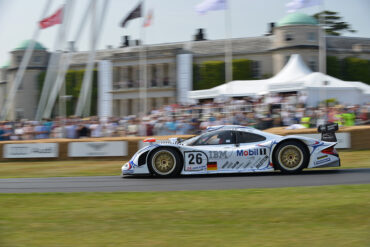2021 Porsche 911 Carrera 4 (992) Technical Specifications Engine layout Rear Engine Engine type Boxer, twin-turbo Cylinders 6 Valves per cylinder...
2022 Porsche 911 Carrera 4 (992) Technical Specifications Engine layout Rear Engine Engine type Boxer, twin-turbo Cylinders 6 Valves per cylinder...
Ultra Rare, Ultra Cool Have you ever seen a 911 Flatnose before? Neither had we. Here’s the story of one...
As a successor to the Carrera 2.7 MFI, the Carrera 3.0 was fitted with a variation of the 930's engine without a Turbo. During its production period only 3,687 cars were made. The Carrera 3.0 was replaced by the Porsche 911 SC for model year 1978. Between 1976 and 1977, Porsche introduced the Carrera 3.0 with wide rear flares, optional whale-tail, and other luxury options. Built before the ‘911 SC’ it has everything the SC has, and more. It’s a different drive with more power @200bhp; more torque @188 ft/lb @4200rpm and it was 10% lighter too.
This 1996 Porsche 911 (993) Turbo has been modified to resemble the iconic GT2 homologation special look that every car enthusiast...
Watch evo’s Jethro Bovingdon put the new Porsche 911 GT3 RS through its paces on the track. Is it the...
2009 Porsche 911 Carrera S Coupe (997.2) Technical Specifications Engine Type Flat 6 Induction Normally-aspirated Cooling Water-cooled Valvetrain Double overhead camshafts...
1984-1989 Porsche 911 Carrera 3.2 Cabriolet Pictures & Gallery...
With all-wheel drive and all the GTS goodies, the Carrera 4 GTS sits in a very practical place in the Porsche 911 lineup. The 4 GTS is a Carrera 4S with all the items Porsche thinks you should have at a price that is less than choosing them yourself. Standard equipment on the GTS that is normally optional on the Carrera S includes the Sport Chrono Package, Sport Exhaust, bi-xenon lights with PDLS (Porsche Dynamic Lighting System) and PASM (Porsche Active Suspension Management). Inside, four-way adjustable sport seats are standard.
2004 Porsche 911 Carrera Cabriolet (996.2) Technical Specifications Engine Type Flat 6 Induction Normally-aspirated Cooling Water-cooled Valvetrain Double overhead camshafts...
1968 Porsche 911 T/R Pictures & Gallery ...
Porsche adeptly blends its vintage and contemporary vehicles to attract substantial investments from its affluent clientele. The 935, launched in...
Porsche will only build 30 examples of the Clubsport 25. Mechanically, it's similar to the regular GT2 RS Clubsport. It makes the 691 horsepower from a twin-turbocharged 3.8-liter flat-six. But it gets many, many changes to the exterior and even the cooling system. As you can clearly see, the body has been lengthened, and it has also been widened. The latter is necessary to house the wide, low-offset 18-inch wheels taken from the Porsche 935, though without the aerodynamic covers.
2018 Porsche 911 Carrera 4 GTS (991.2) Technical Specifications Engine Engine layout Rear Engine Engine type Boxer, twin-turbo Cylinders 6 Valves...
Alan and his Porsche Modified 996 Today Outlaw Garage hit the road with Alan and his Porsche 996. We review...
2018 Porsche 911 Carrera 4S (991.2) Technical Specifications Engine layout Rear Engine Engine type Boxer, twin-turbo Cylinders 6 Valves per cylinder...
A 911 for the road and track – the new Porsche 911 GT3 Stuttgart. The Porsche 911 GT3 delivers motorsport-like performance,...
All Porsche 911s are turbocharged these days but the Turbo model is something special. It gets the twin-turbo 3.7-liter flat six with tons of power and a huge $33,000 savings over the Turbo S. Thanks to an output of 573 hp, marking an increase of 32 hp over the predecessor, the new 911 Turbo Cabriolet accelerates from 0 to 60 mph in 2.8 seconds (0.2 seconds faster than before). The Turbo Cabriolet basically handles like a coupe.
2003 Porsche 911 Turbo X50 (996) Technical Specifications Price $ $133,000 Engine Aluminum Alloy, Twin Turbo Flat-6 Position Rear Longitudinal...
Featuring the Speed Yellow finished Factory Clubsport 1995 911/993 Carrera RS 3.8 Clubsport. Concours-ready, 1 of only 227 examples built,...
In this thrilling hot lap brought to us by sport auto, witness the sheer power and precision of the Porsche...
The 997 GT2 RS Is the Fastest Stick-Shift Production Porsche Ever The Porsche 997 GT2 RS is the rarest GT...
2008 Porsche 911 Carrera S Coupe (997) Technical Specifications Engine Type Flat 6 Induction Normally-aspirated Cooling Water-cooled Valvetrain Double overhead...
Singer Vehicle Design Inspiration – Gorgeous Interiors About to spec your Singer Porsche and not sure what to do with...
Pushing the 4S Hard on Mountain Roads The 2020 Carrera 4S is the AWD variant of the all-new 992-generation of...
1965 – 1968 Porsche 911 Technical Specifications Production Years 1964 – 1968 Built At Germany Body Stylist Ferdinand Price $...
In the 50th anniversary year of the 911, Porsche opened a new chapter in race track performance sports cars. The...
2021 Porsche 911 Turbo S Coupe (992) Technical Specifications Model 911 Turbo S Engine layout Rear Engine Design and cylinders...
Rituals of Rennsport The power of Porsche is rarely measured on a dyno, but you can always tell when it’s...
2021 Porsche 911 Targa 4S (992) Technical Specifications Model 911 Targa 4S Design and cylinders Twin-turbocharged boxer 6 Bore 91.0...
991 Porsche 911 Turbo S Road Review The 552bhp 991 Porsche 911 Turbo S is supremely fast, but does that...
Greatest Porsche GTs – The Ultimate Head to Head Porsche has been making GT cars for 20 years, and its...
1998 Porsche 911 GT1 ’98 Straßenversion Pictures & Gallery...
Porsche 911 Type 964 Carrera 2 'Works Turbo Look' Cabriolet was a special model in the 964 lineup. It gave buyers of the Carrera 2 Cab the great wide look of the Turbo cars and the Carrera 2 engine. The model was available as a 1992 and 1993 model year car (while some argue it was also available for a while in 1994). You get body shape of the 964 Turbo 3.3 without the huge rear spoiler. But this was more than just a design exercise, because the the Turbo-Look models also got the chassis and braking system from the Turbo 3.3 too.
Doug DeMuro Reviews the new GT3 Porsche 911 992 GT3 Review!!! Today I’m reviewing the new 992 GT3, and I’ll...
Porsche introduced the 991 GT3 for the 2014 model year, as follow up to the multiple 997 GT3 variants. The...
2017 – 2019 Porsche 911 Turbo (991.2) Pictures & Gallery ...
In a head-to-head competition presented by carwow, two classic cars, the 1986 Porsche 930 Turbo and the 1992 Dodge Viper,...
Dubbed the “Lautrec Commission,” this custom Porsche 911 reimagined by Singer showcases an extraordinary and meticulously planned specification. Similar to...
1991 Porsche 911 Carrera 2 Coupe (964) Technical Specifications Engine Type Flat 6 Induction Normally-aspirated Cooling Air/oil-cooled Valvetrain Single overhead...
Singer Vehicle Design – Montauk Commission Today, we take a closer look at the Singer Vehicle Designs Montauk Commission. This...
Porsche Option Codes – Porsche 911 (1998 Model Year) Looking to decode your 1998 Porsche 911 option codes? Want to...
2012 Porsche 911 Carrera S Coupé The sixth generation 911 was revealed 2011 Frankfurt Motor Show as an all-new model....
The folks at AutoTopNL managed to get their hands on a beautiful Porsche 964 Targa restomod built by Speed Service,...
1974 – 1977 Porsche 911 2.7 Targa Pictures & Gallery...
2016 Porsche 911 R (991) Pictures & Gallery ...
2012 Porsche 911 GT3 RS (997.2) Technical Specifications Engine Type Flat 6 Induction Normally-aspirated Cooling Water-cooled Valvetrain Double overhead camshafts Injection...
2009 Gemballa Avalanche Roadster GTR 650 EVO-RS As unique car, the EVO-RS is Gemballa’s most potent looking roadster. Based off...
When Magnus Walker was invited to Fjord Lift event in Norway he quickly took the chance to drive a remarkable...
Join Mark and Jack as they discuss the details about the Porsche 911 (992) GTS, a great alternative to the...
Porsche Option Codes – Porsche 911 (2013 Model Year) Looking to decode your 2013 Porsche 911 option codes? Want to...
Porsche is the most successful marque in the 24 Hours of Le Mans and British drivers have played an important role in delivering these historical achievements, and in celebration of this success a special limited edition model – the 911 Carrera 4 GTS British Legends Edition was created. Designed by the drivers who took wins in the 24 Hours of Le Mans for the factory team – Richard Attwood (winner 1970), Derek Bell MBE (winner 1981, 1982, 1986, 1987) and Nick Tandy (winner 2015) – this model was developed by Porsche Cars GB and Porsche Exclusive Manufaktur.
2000 Porsche 911 GT3 R (996) Technical Specifications 2000 Vehicle Description (according to 2000 ACO Le Mans Regulations) Type Racing...
Based on the 993 Carrera 2 coupe, the 993 Cup 3.8 was developed at Porsche’s competition department to replace the...
1987 – 1989 Porsche 911 Turbo 3.3 Cabriolet (930) Pictures & Gallery...
Watch Carwow do what they do best and it is pitching two exquisite cars against each other. This is a...
1973 Porsche 911 Carrera RS 2.7 Lightweight Pictures & Gallery...
The 2019 Porsche 911 Speedster inherits Stuttgart’s latest advancements while paying homage to the original Porsche 356 Speedster. This design...
The Rinspeed Porsche R69 Turbo, aka Porsche Testarossa, was a limited production car from Switzerland. It is believed that around...
Bring A Trailer is currently offering an acclaimed contemporary sports car, boasting a particularly handsome specification. This 2023 Porsche 911...
The turbocharged 930 was produced from early 1975 was Porsche’s flagship 911 and arguably the most capable supercar of its time....
2021 Porsche 911 Targa 4S Heritage Design Edition (992) Pictures & Gallery ...
2011 Porsche 911 GT3 R (997) Technical Specifications Type Racing Car Released at 2010 Autosport International Built at Weissach, Germany Engine...
2015 Porsche 911 Carrera Coupe (991) Technical Specifications Engine Type Flat 6 Induction Normally-aspirated Cooling Water-cooled Valvetrain Four overhead camshafts, four...
Thought it carries a similar design to the new 911, the Carrera 4 has its own unique features, the most obvious being an AWD system hooked up to its new turbocharged 3.0-liter flat-six engine. The C4 gets a spate of new goodies, including a unique taillight section, and an updated infotainment system that brings the sports car’s connectivity to a whole new level. Inside the new 911 Carrera 4, there are only a few changes, the most important is the new infotainment system. With 370 hp on tap from the direct-injection, twin-turbo flat-six and all-wheel drive putting all those ponies to the ground, the C4 is more than quick enough.
Porsche offered the 991 Turbo S from the start of the production of the 991 Turbo. The unique features of the Turbo S were the GT3 mirrors, slightly different front spoiler grilles and interior features. As before, the Turbo S was a heavily equipped version of the Turbo. The powerkit added 29 KW of power and the following equipment came as standard: PDCC hydraulic rollbar system, Sport Chrono (Launch control and 0.15 bar overboost functions), dynamic engine mounts, PCCB Porsche Ceramic Composite Brakes, central lock wheels, full LED dynamic headlights, 18-way Sport Plus seats with memory.
2020 Porsche 911 Carrera 4 (992) Technical Specifications Engine layout Rear Engine Engine type Boxer, twin-turbo Cylinders 6 Valves per cylinder...
2023 Porsche 911 Turbo Coupe (992) Technical Specifications Model 911 Turbo Coupe Engine layout Rear Engine Design and cylinders Twin-turbocharged...
1995 Porsche 911 Carrera 4 (993) Technical Specifications Engine Type Flat 6 Induction Naturally Aspirated Cooling Air/oil-cooled Valvetrain Single overhead...
991.1 Porsche 911 GT3 RS Review Evo’s Henry Catchpole delivers his first impressions on the incredible new 991.1 Porsche 911...
Porsche 911 Carrera RSR Turbo 2.1 On Track This is a 911 that wrote a big part of Porsche history....
For 1974 both the 911 Carrera RSR 3.0 and RSR Turbo 2.1 were created - the 3.0L for the customer teams and the 2.1 turbo for Porsche’s own team. The 911 Carrera RSR Turbo 2.1 developed 338-368 kW in power, but as the engine was small, the turbo lag was big and it wasn’t as easy to drive out of the corners as it was with the 3-litre normally aspirated car. Weight reduction measures included plastic hoods, fender flares and doors and an aluminium safety cage.
Porsche 911 Carrera RSR (1974) by Historika – Monza Historic 2020 + OnBoard, 3-Litre Flat-Six Sound! This great and original...
For race teams and track day customers Porsche prepared a small number of the 964 Cup cars according to the FIA NG-T regulations. Officially called the Competition model, these custom-ordered cars were an intermediary step between the Carrera Cup option (M001) and the standard tourer (M002). This M0003 option was available directly from Porsche as a road-going model. These cars had almost all the Carrera Cup modifications including the new suspension. This lowered the car by 40mm in the rear and 50mm in the front. It also included fitting of the larger 930 Turbo disc brakes and adjustable anti-roll bars.
2022 Porsche 911 Carrera S Cabriolet (992) Technical Specifications PDK 992 Carrera S Cabriolet Specs Model 992 911 Carrera S Cabriolet...
A new turbo flat-six engine is the headline news. Still super fast and surefooted all year round. The revised four-wheel-drive 911 makes the car's appeal on year-round, any-occasion usability even stronger. The 911 Carrera 4S receives a series of subtle styling updates as part of a reasonably comprehensive mid-life facelift. Included is a redesigned front bumper sporting active air ducts that open and close to channel air to the front-mounted radiators dependent on throttle load, revised headlights with altered internal graphics, larger exterior mirror housings and new door handles.
This is the last of the aircooled 911 turbos. Porsche introduced the Turbo for the 1995 model year. It had...
2013 Porsche 911 Turbo S (997) Technical Specifications Engine Type Flat 6 Induction Twin-turbocharged Cooling Water-cooled Valvetrain Double overhead camshafts Injection...
1970 – 1971 Porsche 911 S 2.2 Targa (LWB) Pictures & Gallery...
This 1984 Porsche 911 Carrera coupe was backdated with a twin-plug 3.4L flat-six around 2015 and painted in silver with...
Is the GT3 Worth The Extra Money? Time for a track battle – with a difference! Mat’s brought together the...
The Story of the Porsche 911 – A Timeline Porsche Prepares To Evolve Beyond The 356 By the early 1960’s,...
The Porsche 911 Carrera 3.2 was produced for model years 1984 to 1989. If you are looking to get into...
2006 – 2009 Porsche 911 GT3 & GT3 RS (997.1) Service Schedule This maintenance service schedule checklist is ONLY for...
Chris Harris Spanks the New 991 GT3 If we were a car magazine we’d call this a WORLD EXCLUSIVE, but...
Just a few months after the introduction of the 2004 911 (997 series), the convertible version was released. The release of the 997 911 Carrera Cabriolet marked the first time since 1977 that Porsche has given the convertible 911s the same engines as their Coupe siblings. The base 997 Carrera Cabriolet gets the 3.6-liter flat six-cylinder engine with 321 bhp and 273 ft lbs of torque. The convertible version for both Carrera and Carrera S was developed at the same time with the coupe.
The two 997 Targa 4 cars are both offered in only all-wheel-drive. Available with either a 3.6 litre flat 6 in the Targa 4, or with a more powerful 3.8 litre flat 6 in the Targa 4S, the new car offers almost all the fun of a convertible without sacrificing the dynamic abilities of a hardtop. The Targa 4S gets to 60 mph in 4.7 seconds and tops out at 179 mph thanks to its 3.8 liter flat six pumping out 350 bhp and 295 ft lbs of torque. It has softer spring rates than the coupe, a more generous helping of leather in the cabin, a better tally of standard equipment, more storage space behind the front seats.
2014 Porsche 911 Carrera Coupe (991) Technical Specifications Engine Type Flat 6 Induction Normally-aspirated Cooling Water-cooled Valvetrain Four overhead camshafts, four...
The 2017 Porsche 911 Turbo S GTStreet R by with its carbon-fiber body, huge double-decked rear wing, GT3 RS-style wheelarch...
Based on the 911 S, the 911 R was produced by Porsche to compete in the FIA’s GT 2.0 category....
2017 Porsche 911 Carrera Cabriolet (991.2) Technical Specifications Engine Engine layout Rear Engine Engine type Boxer, twin-turbo Cylinders 6 Valves per...
Porsche introduced a new wide-body package option. Known as the M491 option it was commonly known as the "Turbo-Look". It gave the naturally aspirated cars the look and style of the 930 Turbo with wide wheel arches and the distinctive "tea tray" tail. It wasn't just about looks however, because M491 also got you the stiffer suspension shared with the Turbo and the superior Turbo braking system as well as the wider Turbo wheels. It was available on the Coupe, Cab and Targa.
Ultimate Track Test Introducing the ULTIMATE 911 – the Porsche 911 GT2 RS! When it comes to road-going sports cars,...
Porsche 997 GTS Review Today, the 997 GTS is revered as one of the high water marks of the 911’s...
Though largely forgotten, Porsche will soon release a special new model: the 2023 911 ST. What is the ST and...
While the base Targa isn't the most dynamic 911, it will suit a certain buyer well. If you want the sexiest looking 911 that is a great all-rounder and you don't plan on spanking it all the time, then this is a great 911 to buy. Even in lower-powered form, the 3.0-liter is a peach of an engine. Torquey across its rev range, it responds quickly to prods of the throttle. The real problem with the Targa is the added weight and the structure, which hurts it dynamically.
The Porsche 953 ranks as one of the finest off-roaders Porsche has ever made. It was basically a souped-up 911 designed specially to give Porsche an advantage in the 1984 Paris–Dakar Rally. Just a year later, it was replaced by the 959. Despite its brief run, it still managed to make quite the impression. Built around a massively enhanced suspension and a supremely powerful 300 bhp (224 kW), 6-cylinder engine, it showed Porsche knew more than just sportscars.
Great sound, great engine! Filmed at Circuit Spa-Francorchamps, Zolder and the Nürburgring between 2011-2017. Great compilation of on-track fun in...
TechArt has transformed this 991.2-generation 911 Turbo S into their high-performance ‘GTStreet R’ specification. The car is coated in a...
1998 Porsche 911 GT1-98 Pictures & Gallery...


